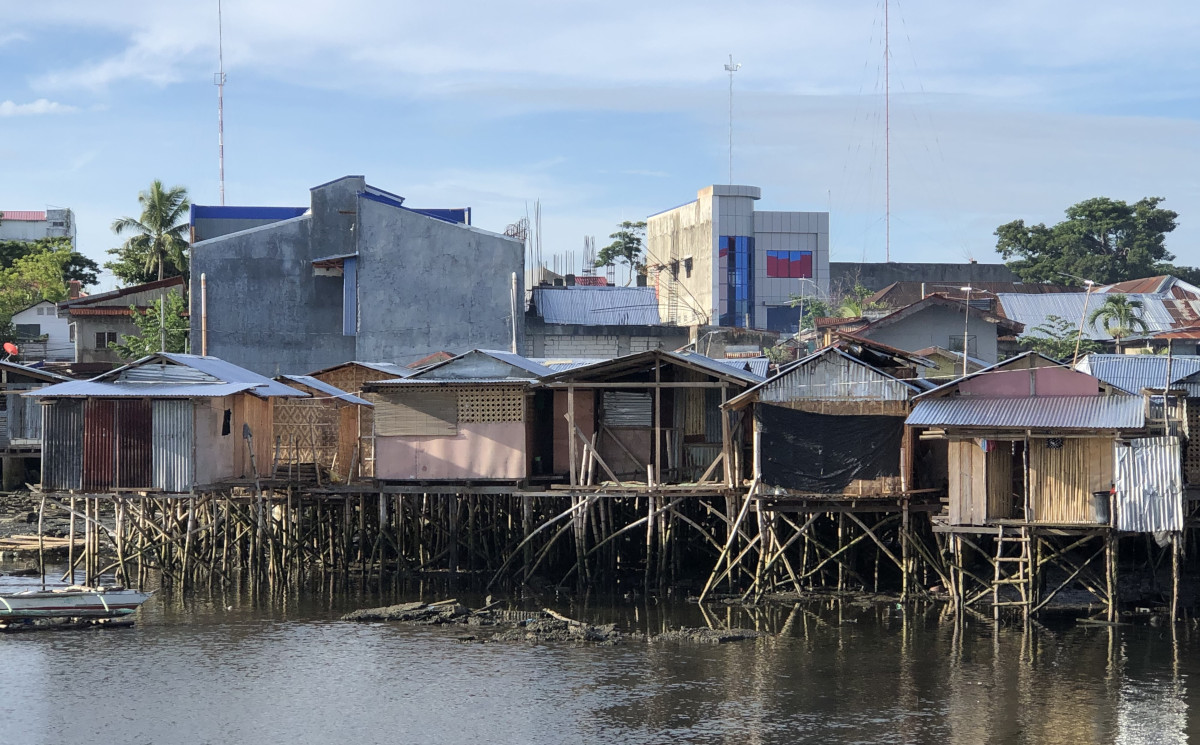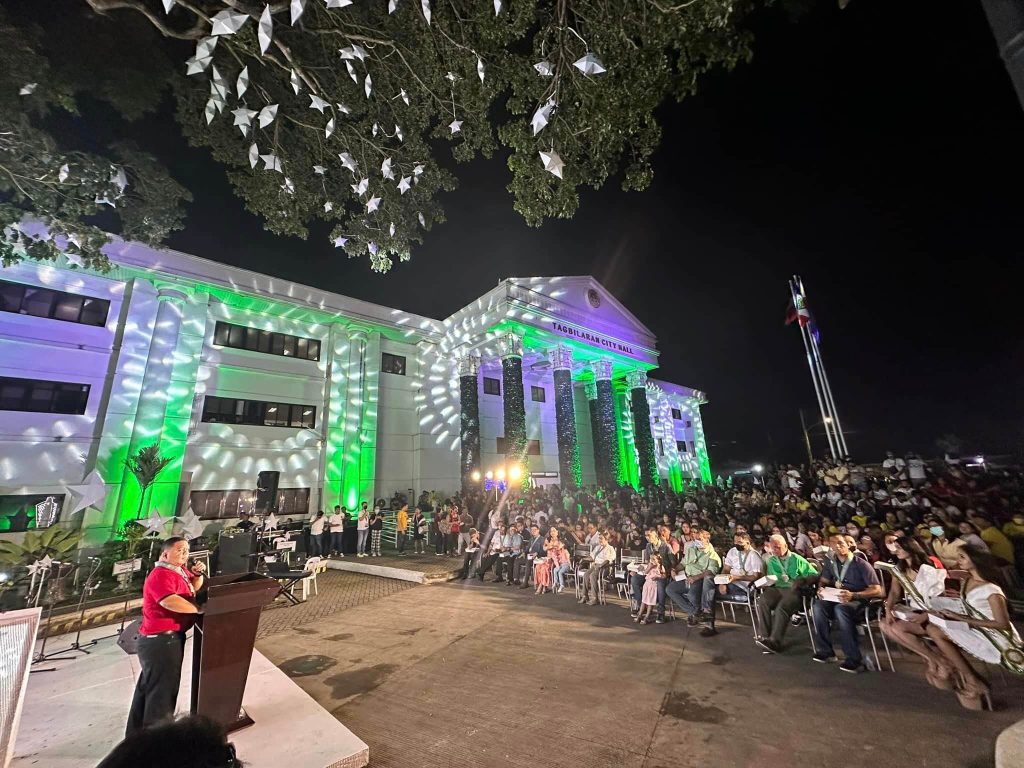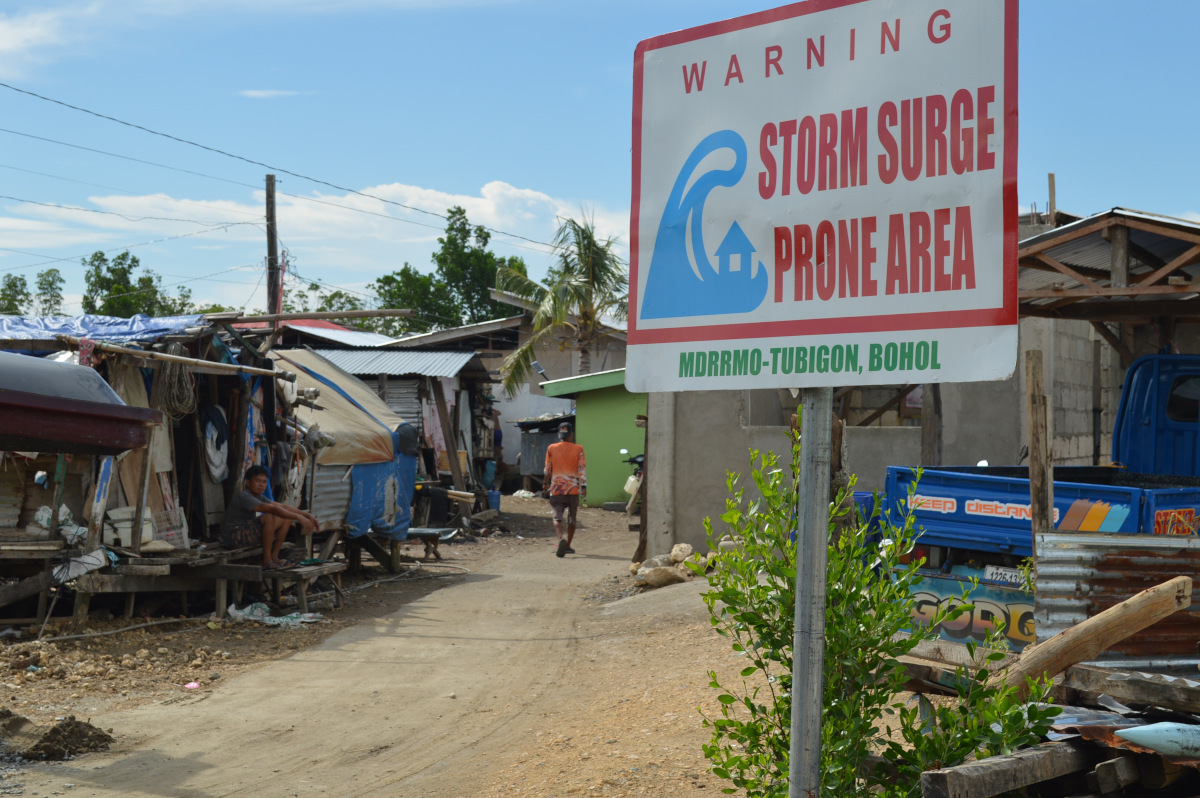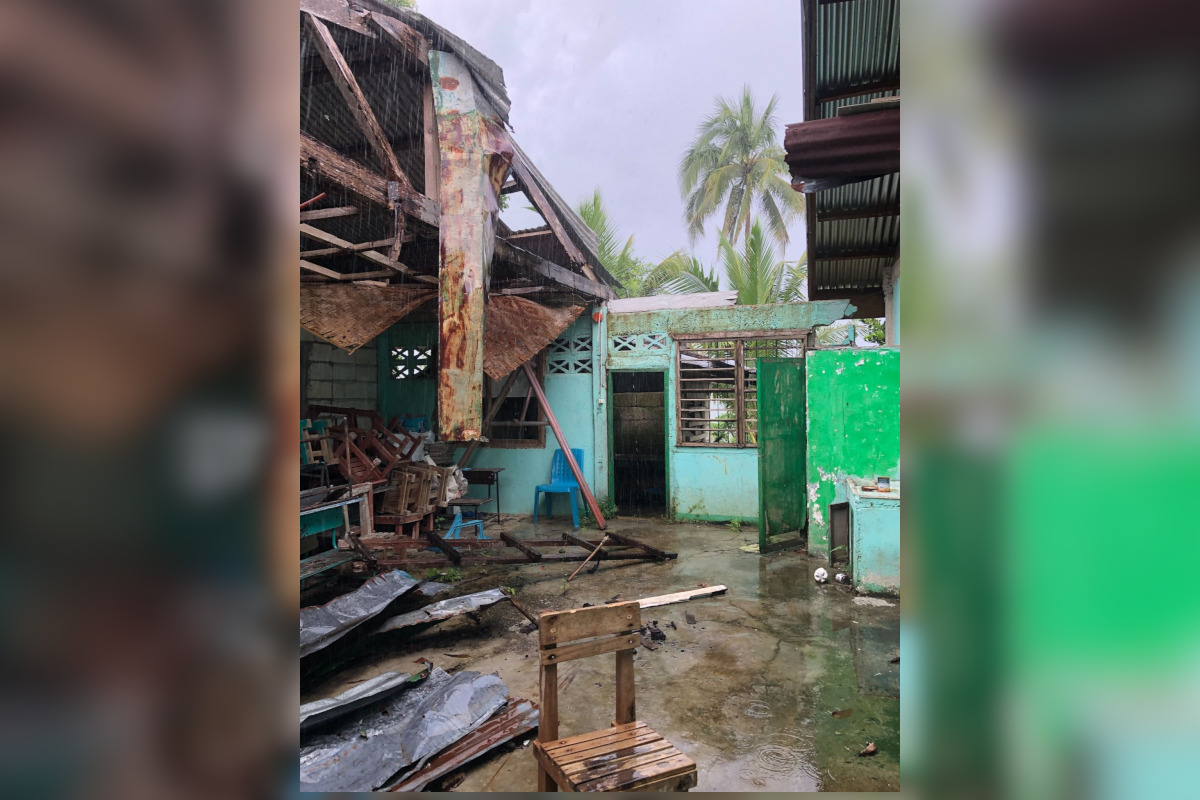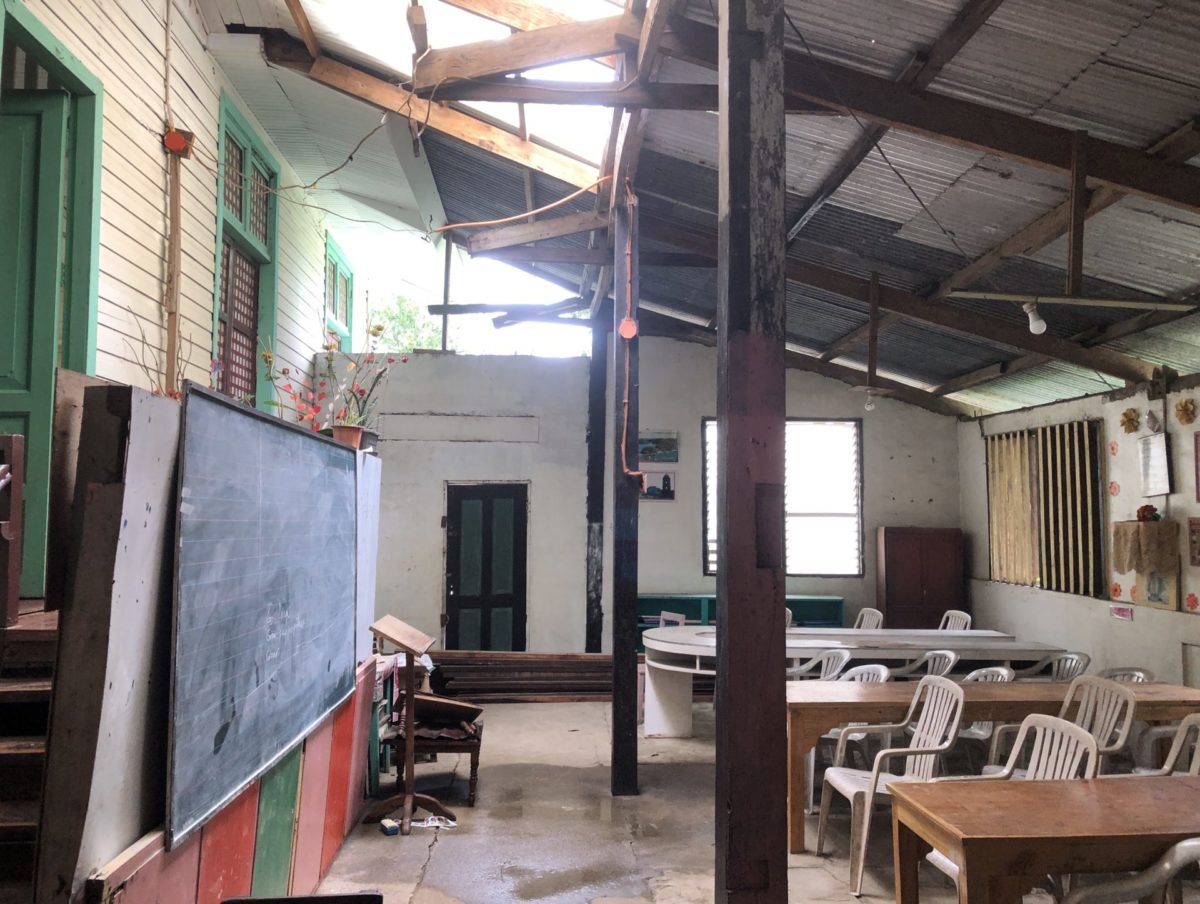Part 2
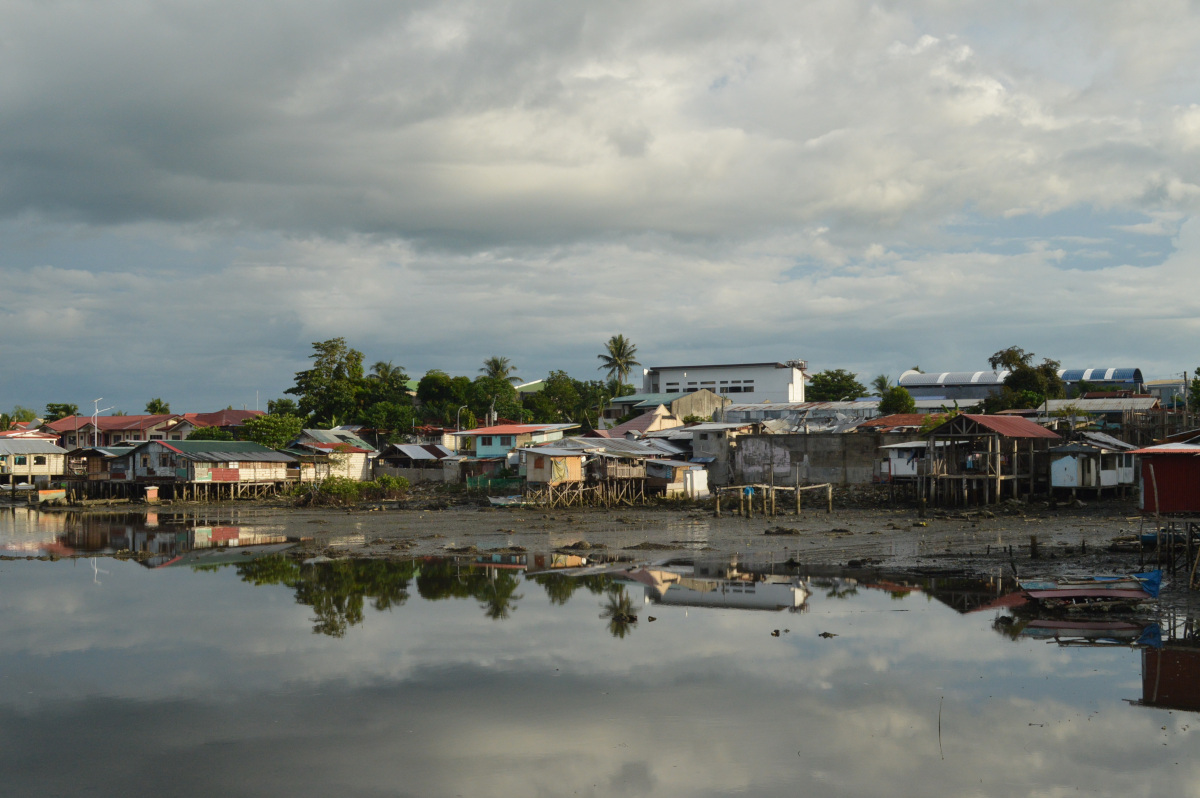
TAGBILARAN CITY — It is a common sight after a powerful typhoon or earthquake hits the country: poor communities are evacuated to temporary shelters to protect them from further danger.
Authorities say they should not have been there in the first place but are forced to live in dangerous areas largely due to poverty. In Bohol, like many parts of the Philippines, the poor are forced to live in dangerous locations, like next to riverbanks, or along the coast or on steep slopes, says one report.
“This is mainly due to rapid urbanization, which led to a large number of unplanned and overcrowded settlements. People live in mountainous areas and near the shoreline due to their livelihoods,” according to a 2017 study of rehabilitation after the earthquake in Maribojoc in 2013.
Moreover, due to poverty, many of Boholanos do not own land, Dutch author Laura van Vieshout said in the report entitled ‘Empowering People, Caring for Environment,’ which was produced under an internship arrangement between a European organization and PROCESS Bohol, that works to strengthen people’s organizations.
“Problems occurred during the time of rehabilitation since one of the requirements of receiving funds for building back the houses, was that the people had to own the lot. Therefore, many people are still not rehabilitated after the earthquake,” the report said.
And so the cycle continues.
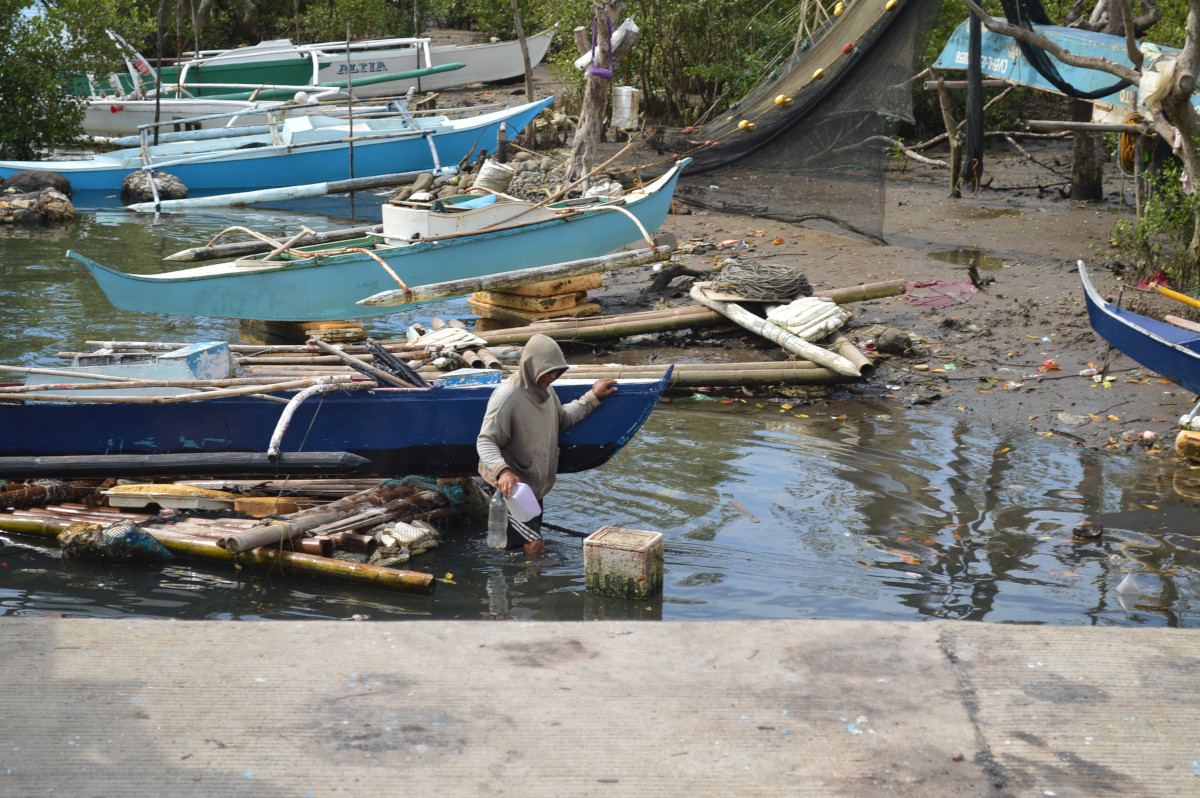
“The informal settlers (or internally displaced persons) have been prohibited to go back to the danger zones, but the DPWH cannot stop people from doing so since their source of livelihood — fishing and selling in the market — is there,” explained Olivia F. Lopos, Supply Officer III and designated information officer of the Department of Public Works and Highways in Ubay.
Feliciano Bernalez, OIC Disaster Risk Reduction Management of Ubay, reaffirmed this. “They’re not supposed to be allowed there, but they still return even if they know they are in danger zones based on (their) experience of the last typhoon. They hesitate to leave since that is where their livelihood is. What will they do in the mountain? They find it hard to leave the coastal area,” he said in an interview.
“Hopefully steps will be taken legally that people in danger zones are transferred to safe places,” he added.
Again on the presence of informal settlers in the landfall site, Engr. Martin Pelarada of the DPWH, said those facing the sea are in danger, but those on the other side of the embankment are protected because seawater can no longer get inside since there is a barrier. “If there is a storm, however, the informal settlers will have to leave that place.”
Exposure to hazards does not automatically make a community vulnerable to disaster, but if the community is poor and with less capacity to manage itself, then it will always be “victimized” by natural or manmade hazards, according to Oscar Lizardo, former chief information officer of Project NOAH, the Philippines’ primary risk reduction and management program.
“If an area is exposed to hazards, not all [people there] are vulnerable, but the poor are,” he said in a lecture in Bohol several years ago. Vulnerability, he added, could also be due to “various physical, social, economic and environmental factors, such as poor design and construction of buildings, inadequate protection of assets, lack of public information and awareness, limited official recognition of risks and preparedness measures, and disregard for wise environmental management.”
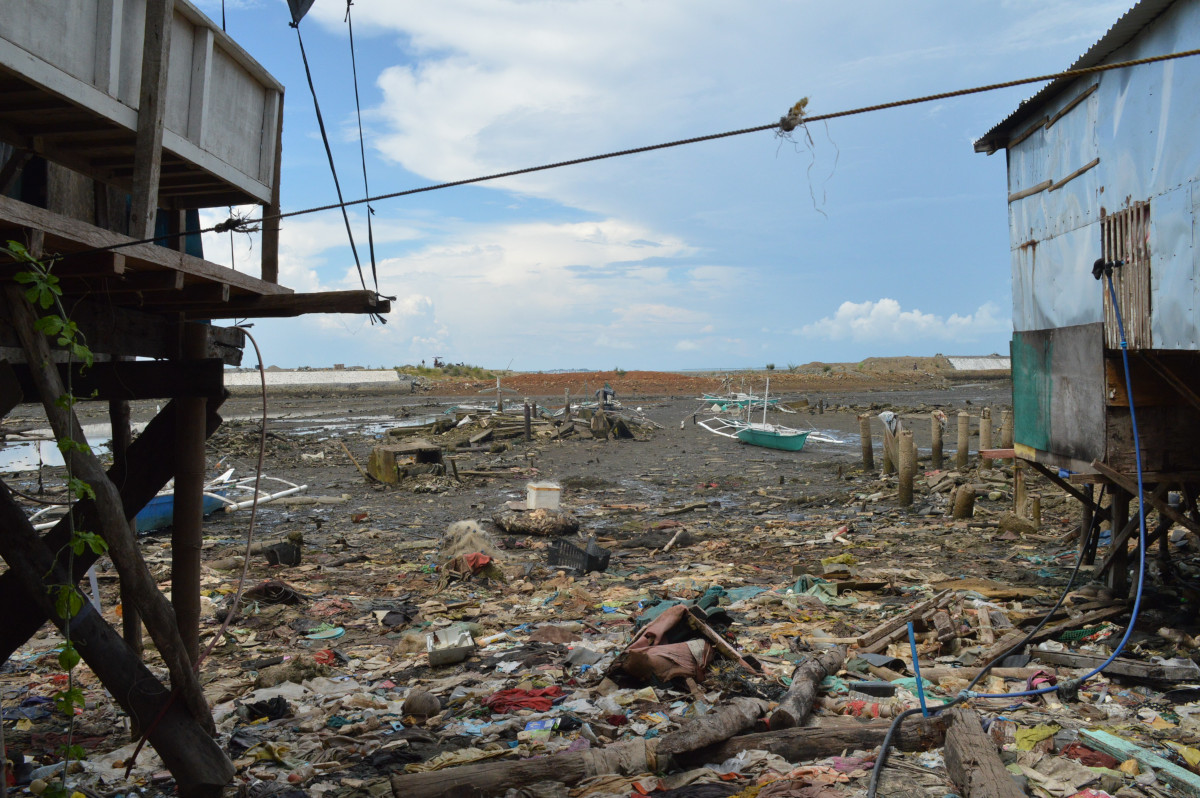
Mrs. Lopos says that full recovery of Ubay town and the other towns where tropical cyclone Odette made landfall in 2021 cannot fully take place unless the issues of jobs and poverty are addressed. “There is the challenge of everyday living, the daily effort to stand up and find a job so that the family can have food on the table,” she adds.
Delayed funding and completion of structures
One area of contention about the implementation of disaster risk management (DRM) projects involves the delay in the release of funds intended to quickly respond to urgent needs, like flood prevention structures and bridges, immediate relocation or evacuation, and contractors’ schedule of completion that are unchecked or extended, say some residents of Ubay and Maribojoc.
Based on the experience of local leaders, it usually takes a long time to release DRM funds, even for projects intended to rebuild or restore damaged structures.
Margarita Bagase, 74, resident of Busao, Maribojoc, cited a billboard that marks a P42-million construction project to maintain flood mitigation structures and drainage system along a flood prone river leading to Tubig Dako to the Inambacan cave and spring. The project started June 14, 2022 and was scheduled for completion on January 6, 2023.
“We have observed that there must have been at least four contractors for the construction of this project, but typhoons and floods have come and gone since 2014, and we’ve waited for a long time for its completion,” Bagase said, indicating that it is an old initiative that remains pending. It falls under the management of DPWH Bohol First District Engineering Office.
In Ubay town, ten-wheeler trucks carry limestone soil and gravel for contract projects to construct what a billboard says would be the “improvement of access road leading to the seaport”.
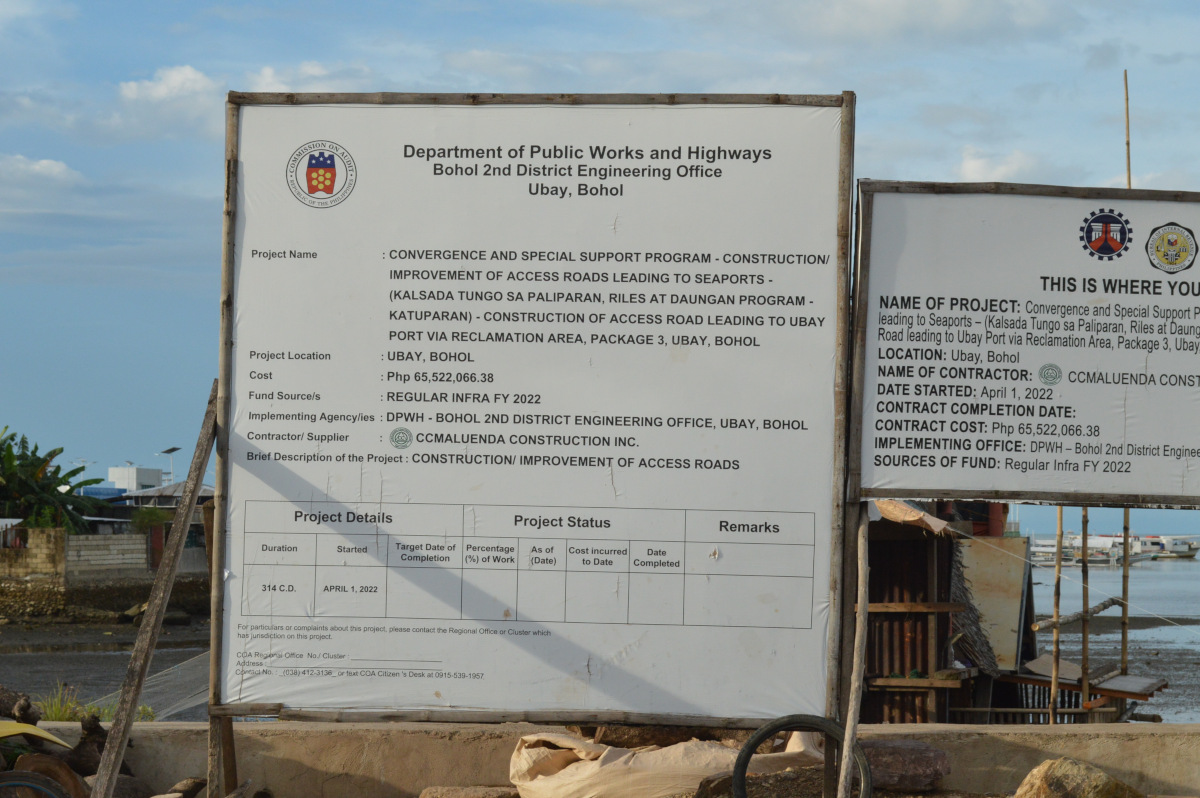
The two projects, worth a total of over 100 million pesos, are intended to be part of a diversion road for big trucks going to the port, to decongest the traffic in the town, but it also serves as barrier to prevent seawater from flooding Fatima village in Ubay, which was levelled by typhoon Odette in 2021.
The other part of the diversion road/barrier which was completed before the latest typhoon struck, served to block the water from hitting Tapon village directly in 2021, thus preventing residents there from being swept to the sea.
Pinky Jumamil San Pedro, a grandmother and former school cashier who survived the storm surge in 2021, said it would have been a great help to her village if the barrier was completed before typhoon Odette struck. “If the Poblacion barrier had been completed at the back of our house, it would have prevented the sweeping away of our place,” she said.
The first project started on March 28, 2022, and the second one started April 1, 2022, with no completion dates on the billboards.
Engr. Pelarada, Construction Section Chief of DPWH Ubay, said there was an original completion date, but his office allowed an extension since it was always raining. The original completion date was last May 24, 2023. As of the end of the year, the project was still uncompleted.
“If the contractor has negative slippage, (unreasonable delay) the contractor will be penalized. This will be deducted from his final billing,” he pointed out. Another source of delay, he said, is that release of funds for the projects is done on a staggered basis, hence it takes a long time to complete projects.
Asked to comment on the delays in the release of emergency funds, Bohol DRRM Officer Dr. Anthony Damalerio admitted that delays are also caused by many procedural requirements. “Before the downloading of funds, you have to have a declaration of a state of calamity, and others like the signatures of affected villagers. Even in giving out food packs, we need to get signatures. There is too much bureaucracy. We have to change the mindset of government when it comes to emergency.”
A World Bank technical working group report (2020) says that “while the NDRRM Fund is a key government fund (budget line) to respond to disaster, it does not achieve its potential due to delays in releasing funds and a lack of flexibility in the use of the fund.” WB Document.
“Beyond delays in approvals, there are other signs that it is not working as intended. For example, the NDRRM Fund is expected to also finance pre-disaster activities and provide support to LGUs, but has barely done so,” the report says. “Complex approval processes often delay the release of funding even from pre-arranged mechanisms, leading to delays in disaster response.”
It says the approval of funding requests from the NDRRM Fund takes a long process that includes evaluation from various offices, including the Office of the President, that could take a year or more before funds are released as against the prescribed timeline for national government agencies of 15 to 30 days.
Partnership in resettlement program
It is not all bad news, though, as illustrated by the experience of communities in Talibon, another town battered by Odette.
The case of Talibon illustrates how a town can go into a partnership with non-government agencies, such as Philippine Red Cross (PRC) and the United Nations Development Programme (UNDP) and other government agencies, to resettle disaster-stricken communities from areas which have been declared no-build zones. Talibon town opted to have a relocation program, Damalerio said.
Along with the President’s Socio Civil Projects Fund (SCPF) and the National Housing Authority (NHA), the LGU pooled its resources successfully to facilitate the acquisition of a 7-hectare property in San Carlos village, some six kms from the town center, for its relocation site.
The PRC, through its Full Shelter Assistance program, funded 70 housing units measuring 21.54 square meters each, complete with latrine provision. The houses were funded by the PRC from the P25.9 million it gave to Bohol to build full and transition shelters for the storm victims.
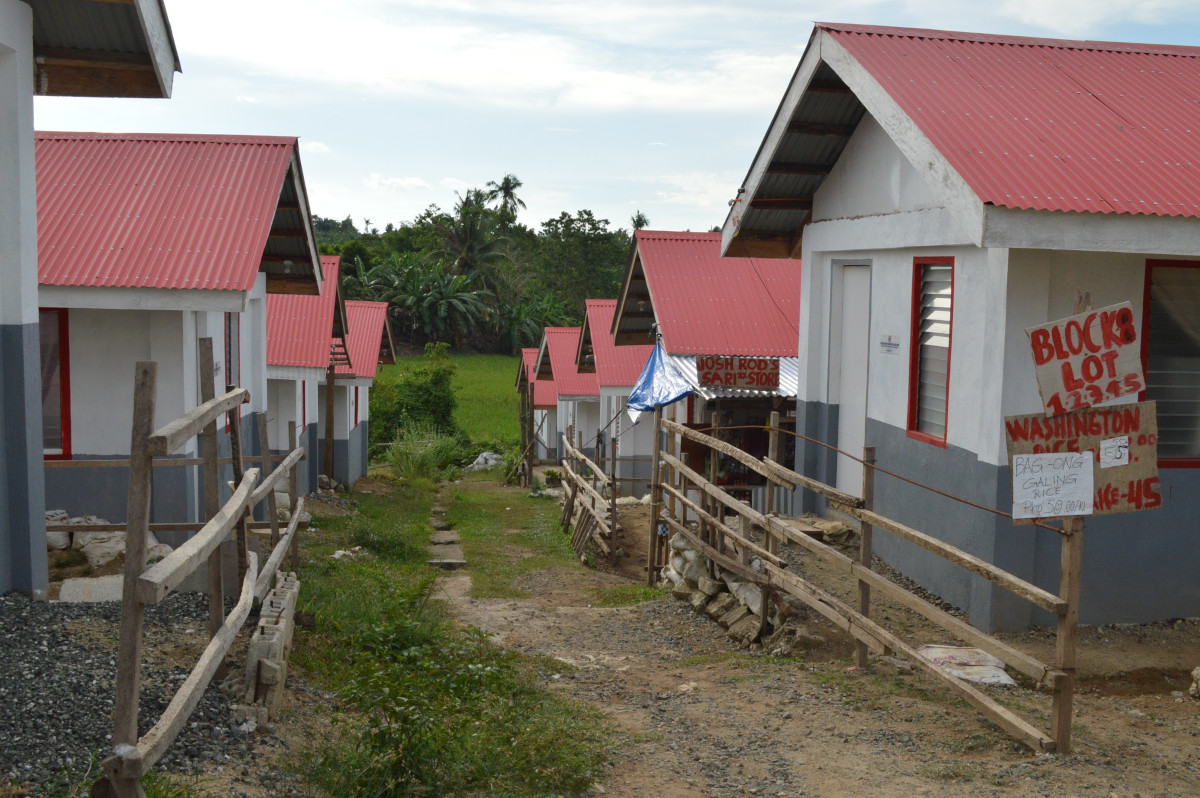
At the PRC Housing site in San Carlos village, now branded as CPG Ville, is a neat row of red-roofed white bungalows.
The 70 housing units at the Red Cross relocation site are for the survivors from the villages of Pasil and Eskinita in Talibon town. They were constructed in record time from October, 2022 to May, 2023, with the beneficiary families also providing labor counterpart for the construction of the units.
But many of the families still go back to their old place mainly for work or to go to the sea, their main source of livelihood. Others work as bakers, market vendors or engage in enterprise activities for a living.
At the time of the author’s visit last September, only 21 were living regularly in the 70 housing units since the rest are still waiting for power and water services to be installed. Their main livelihood activities are still based in Pasil and Eskinita.
Dorlen Tomada of Pasil, bakes cakes, but due to the absence of power in the relocation site, she finds it hard to continue her main source of income. “I am thankful for the house and lot that I would not have afforded to buy, but I will be happier if the houses are provided power and water services, so that I can continue my small business enterprise of baking cakes and making snacks.”
Jessica Patin has a sari-sari store selling bottled mineral water and other household items in the relocation area, but says there’s hardly any buyer, so she just uses them for her own consumption.
While waiting for the power and water services, she fetches water at a well nearby, and uses solar energy for light. “We can live with these inconveniences, including mosquitoes. That’s all right, as long as we have peace of mind. We don’t have to worry about strong waves and winds here, as we did in our old place,” the resident says.
Ranillo Avergonzalo, the young head of San Carlos village, says: “We are thankful for the new housing project that brought 70 new residents, which means more economic activities and more visitors to our place.”
He disclosed that 164 households in his village were granted P15,000 each by the Philippine Red Cross for a livelihood activity of their choice. Some chose pig-raising, while others preferred gardening and setting up sari-sari stores.
Also in the same relocation site as the Red Cross, the UNDP is currently building what an unnamed representative called 20 concrete climate-resilient housing units positioned in two rows, with 10 units in each row, and each unit costing P500,000. The project began in 2022 and is still on-going.
“Families living in danger zones like the island communities experienced most of the impacts of (climate) disasters. We have experienced extreme weather events in the Philippines repetitively and while we always find ways to rebuild and recover, we want to see more resilient communities that can avoid similar damages,” Floradema Eleazar, UNDP Philippine Climate Action Team Leader, told media during the ground-breaking ceremony for the housing units in 2022.
The LGU in Talibon is to provide a water pump to make the water system operational and distribute water pipes up to shelter units. Through the NHA, it has promised to build 30 more units in the relocation site.
Donors for relocation site housing units, like the Philippine Red Cross and UNDP, want to make sure that the LGU owns land for resettlement purposes so that the project will not face ownership issues later or in the middle of the project, according to Talibon housing officer Engr. Ramil Artiaga.
“In the case of Talibon, the LGU still owns the land, and the beneficiary owns the house. This is to prevent beneficiaries from selling the land,” he said.
Prioritize climate emergency response
Climate action supporters and DRRM practitioners, like Damalerio and Leonardo Samar of Bohol’s Weather Surveillance Station, have expressed the need to prioritize response to climate change emergency in the province given its susceptibility to severe weather conditions, including the onset of rising tides in many of its 70 component islands.
“Typhoons are getting stronger, and we are the most disaster vulnerable country in the world. Six to seven years from now, another major cyclone could hit us in Bohol,” Damalerio warns. “Preparedness is the name of the game, which means we have to do training, procure equipment, we have personnel. We have to be single-minded about disaster preparedness.”
Samar says that the frequency of occurrence of typhoons dropped in 2023, adding, “We are now in the strong El Nino condition. In our monthly rainfall forecast these days, we are still in normal condition, but starting January to May, 2024, we will be getting below normal rainfall. There will be a dry condition end of February, then dry spell end of March, and at end of May, Bohol will experience a drought condition.”
“There’s a 5% budget allocation for local DRRM, there’s no reason local government units can’t prioritize climate emergency response. Why not utilize this, spend it in much needed education, training and preventive measures, rather than put it in a trust fund which could further delay its release,” Damalerio stated. “There are some leaders who are biased with infrastructure projects, they prefer schools, bridges, water pumping stations, etc. because that is what people see,” the provincial DRRM officer noted.
“One better way is to educate the children to have an impact on the next set of leaders, so that when it’s their turn to lead, we can say we did our part. It is going to be everybody’s business — the media, the children, senior citizens, and civil society when it comes to disaster response and climate emergency preparedness.” It is not just the concern of government disaster management offices, he stressed.
He called for the easing of procedural and bureaucratic requirements when it comes to emergency, and the release of DRRM funds.
“It’s going to be a collective effort as far as climate disaster and emergency preparedness is concerned,” Damalerio said. “We have the same earth. We have to work together.”
For this part, Samar said: “It is important that there is a global effort to minimize carbon emissions. We in the Philippines are severely affected by climate change, but our contribution to global warming is minimal, compared to the big countries, like China, USA and Europe. They are big contributors to greenhouse gases,” Samar observed.
“They say the big countries will pay for their damage, but the environmental devastation and loss of lives cannot be compensated enough,” he stated.
Part 1: Climate Disaster Survivors in Bohol Struggle to Recover as Rehabilitation Plan Remains Unclear
This story was produced with the support of Internews’ Earth Journalism Network.
